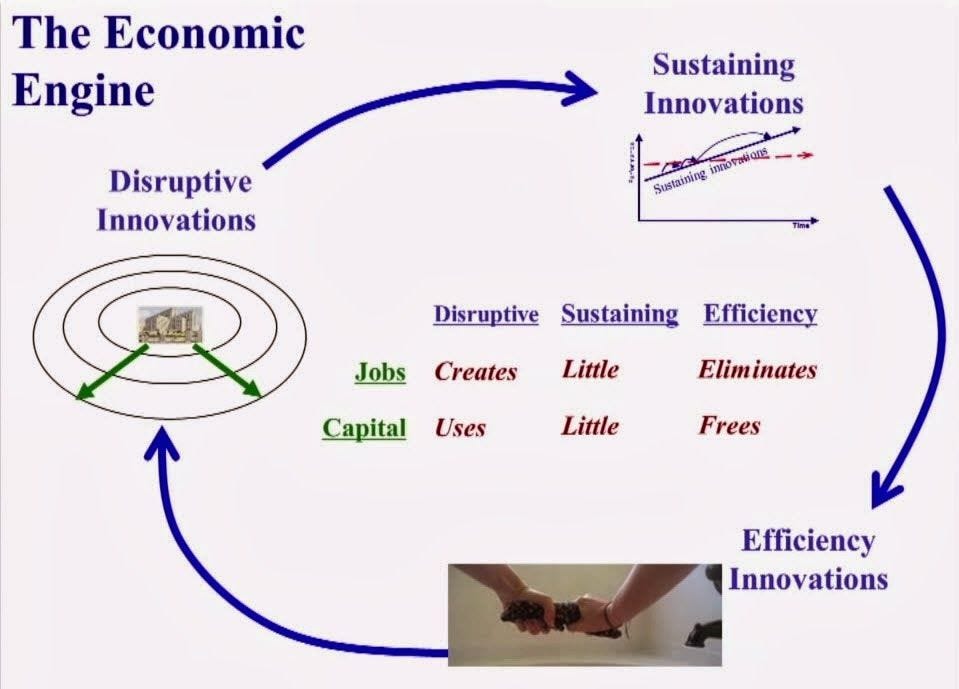How product culture and company culture are intrinsically related.

“Company culture is the backbone of any successful organization.”
—Gary Vaynerchuk
A goal is something to aim at
Company culture is a powerful hiring magnet and a common discussion topic both in- and outside of companies. It starts with providing good environment and conditions for work, but really is about making employees feel included and valued. The general understanding is that when employees feel they are truly part of the company, they are more motivated to give their best, to go the extra mile, and to deliver big wins for the business. They strive to create great quality products.
If we understand product quality as the degree to which an object or entity (e.g., process, product, or service) satisfies a specified set of attributes or requirements, then high-quality products are those that solve a real user problem so well as to transform the customer’s world. Conversely, low quality products are those where either we deliver the wrong thing or inaccurately define the product’s actual qualities, and lose customers for it.
The large majority of products, though, lie somewhere in between those extremes. They address a problem affecting a group of customers with a solution. Maybe not the best. Maybe not completely solving the problem. But — as implied by the definition of MVP — just enough to keep users retained and not feeling like they need an alternative. A minimal viable product that minimally satisfies the user.
For non-software products, product quality is relatively straightforward to establish since a finalized end-product needs to exist at the end of the development cycle, and which can be compared against competing products on a pretty much 1:1 basis. This is as true for raw materials and commodities as it is for industrial products. This way, a buyer can evaluate the characteristics of multiple brands, decide which suits their needs best, and proceed to checkout.
Software products, however, make this significantly more complex, primarily because these days software is never “done” — Continuous Integration/Continuous Deployment (CICD) is a loop, not a line. It is no longer purchased as a complete unit, with updates and patches only made available to prevent major bugs or crashes from happening. As such, comparing competing products is much harder because they are in a permanent state of change. The buyer has to assess software as a product in a projection, potential against potential.
Hence, in order to build great product culture, we should aim for outcomes (functionalities) over outputs (features). By understanding what customers want to achieve, product teams can implement more durable solutions and so provide a steadier potential projection. As Saeed Khan puts it
Product Management is a system for driving business success. It’s about achieving positive product outcomes (success), NOT ongoing product outputs (delivery); because business success COMES from product success.¹
But that invites the question: what is business success?
Trapped in the amber of the moment
Clay Christensen² discussed the innovation cycle and its role in the success of companies. His model describes how innovations make the market more stable and profitable for all its participants. New players create disruption by introducing new technology (or new applications to existing technologies) to larger sectors, making it cheaper in the process. Disruption consumes capital but creates jobs. Meanwhile, established players optimize existing markets by sustaining innovation and making products more efficient, and in the long run they eliminate jobs and free capital for new investments.

He recognized this process only works while disruptive → sustaining → efficiency run in a feedback loop, with jobs and capital freed up by efficiency innovations being applied back into the market via disruptive innovations. However, once businesses figured they could make more capital by rerouting the resources freed up by efficiency into newer rounds of efficiency, the cycle was effectively transformed into a straight line — “and the problem with a straight line is that it has a beginning… and an end.”
Christensen noticed the reduction in the number of disruptive innovations were directly related to the increase in the interval period it took the US economy to rebound from crises. He posited that was because optimizing for profit took more jobs out of the market then when investments in disruptive innovations took place. Crises are now longer and more frequent. His Disruptive Innovation theory also points to an imminent problem companies face: if a product only moves upmarket, it will eventually reach a ceiling with no more room to grow — and it can only accommodate so much efficiency before its ROI stops being valuable.
At this point, companies are faced with a tempting offer: purposefully reduce the quantity or quality of their products for a sustained or increased profit margin. For non-software companies, that may take the shape of package and/or content manipulation. There’s this apocryphal story about an employee at a toothpaste factory suggesting an increase in the diameter of the hole would yield increase in sales, but we can also look at more recent examples. In a 2014 story, Time reported Lay’s reduced the amount of potato chips in some of their products by an average of 5–6 chips per package. “Cutting half an ounce from a bag while leaving its price unchanged correlates roughly to a 21 cents-per-bag saving” for a projected savings of more than $50 million annually. In a similar story from 2022, Newsweek reported on shrinkflation affecting multiple product lines across different industries.
Software product companies cannot practice shrinkflation in the same way, but because of the very nature of their products, they can one-up other industries by modifying the performance of their components in real time. Enter enshittification³: why bother to count the amount or weight of chips in the package when you can completely block a printer from working until the customer uses the company’s proprietary ink cartridges?⁴
Organizations have now become locked in a race to the bottom, testing how much inconvenience customers are willing to take before churning. We can see it on Youtube and Spotify, where the current business model seems built on piling inconvenience after inconvenience on the user — intrusive and too-frequent ads being the common offender — , in an attempt to convince said user to pay a subscription in return for the promise to remove those inconveniences that were added by the company in the first place.
(We would do well to remember that such promises are oh-so-easily broken).⁵

Here be monsters
Enshittification is a term coined by writer Cory Doctorow, at first addressing the degradation of online platforms but eventually extended to cover pretty much any product that contains software.⁶ According to him, this process is a great temptation for any company that reaches a certain position in its market, because
[c]apitalists hate capitalism. For a corporate executive, the fact that you have to make good things, please your customers, pay your workers, and beat the competition are all bugs, not features.⁷
Doctorow identifies four constraints that should prevent products from becoming enshittified — competition, regulation, self-help (aka “adversarial interoperability”), and workers — although he argues these are being gradually eroded by corporations incrementally turning into revenue-driven platforms at the expense of user experience.
Thus, profit generation became the end-goal for these corporations. Although great products were instrumental in leveraging them to their dominant positions, their very quality eventually handicapped revenue. And with start-ups often modelling their growth plans on case studies from these corporations — and being financed by many of the same entities that finance them — one can reasonably assume this cycle is not about to end so soon.
When a company optimizes for shareholder profit, it will inevitably reach a point where it can only increase its margins by deprecating its product (outer enshittification)⁸ and/or cutting production costs and company culture (inner enshittification).⁹ It is the latter that I want to focus on.
The organization sacrifices its company culture¹⁰ and its social role in exchange for retained or increased profit margins for its investors. As the market fluctuates, or if there’s indication of likely reduced shareholder gain, workers are laid off and work privileges are cut short.
Results of our determinant analyses are consistent with managers using RTO mandates to reassert control over employees and blame employees as a scapegoat for bad firm performance. Also, our findings do not support the argument that managers impose mandate because they believe RTO increases firm values. Further, our difference in differences tests report significant declines in employees’ job satisfactions mandates but no significant changes in financial performance or firm values after RTO mandates.¹¹
Next come the waves of mass layoffs from massively profitable companies,¹² where the goal is to maintain share price at the expense of human resources. And while there are perfect valid reasons for companies to reform themselves aiming for increased productivity, it is questionable whether this was the case recently as those responsible for company-wide goals — high management and executives — are usually the least impacted.
It is here that the same efficiency process described by Christensen reaches truly inhumane levels: employees fired by email in the middle of the night and locked off of their machines; without any official in-person follow-ups; while on medical, maternity, or disability leave; without any consideration for enabling the (now former) employee to plan their after-employment lives properly. It is little wonder multiple studies¹³ confirm such actions have very limited and short-lived profit impacts, but long-lasting consequences for employee morale and productivity. Since the people running corporations are reputedly very intelligent, we must assume this is intentional.
With great power…
Perhaps we should to take a broader approach to defining what constitutes cultural greatness for product companies. Sure, some of the big tech companies have great ways to build product¹⁴ that distinguish them from the rest of the market. And from a professional growth standpoint, one can learn a lot about techniques and processes from them and from current/former employees. But I would argue we should also take into account the footprint we leave in the world through the actions we take on behalf of the companies we work for.
Eric Ries contends shareholder primacy is not only morally wrong, but also an impediment for companies to take their own rhetoric about changing the world seriously. By making short-term gains a priority over anything else, they create volatile market environments and prevent businesses from serving anyone but their shareholders.¹⁵
We have built a massive apparatus in these organizations to make sure that certain things happen. Companies are really good at things they care about, and therefore we can learn something interesting about the things that they care about by what they choose to be good at, [and] what they are perennially not good at.
And so my view is that what it means to be a for profit company… we’ve gotten it wrong… Making a profit is actually about maximizing human flourishing.¹⁶
Ries argues companies can’t pretend to be superheroes when it’s convenient, only to evade and deflect when called upon to take moral responsibility for the outcomes of their actions. To be trustful, a company needs to embed those promises in the structure of the organization itself, so that it’s not up to specific individuals to maintain them.
It is all about creating fiduciary duty to do right by the company’s promise, to create and sustain the required alignment between governance, management structure, actual operations, and culture of the company.
I believe it was such a need to do the right thing by one’s standards that led former Circle CI founder and CEO Paul Biggar to publicly break with investors and supporters over Israel’s actions in Gaza¹⁷; that drove Linear co-founder and CEO Karri Saarinen to publicly criticize Carta for doing cold outreach without the consent of the company¹⁸; that guided former Nintendo CEO Satoru Iwata to protect employees from being laid off and instead take a 50% pay cut off his salary and a 20% cut from executives salaries following the Wii U flop.¹⁹
…come great responsibilities
Company culture is more than privileges and office perks. It is more than the technical and organizational skills and processes deployed when creating product. It goes beyond the sloganeering and PR efforts.
Given enough time, bad company culture will erode the best product practices.²⁰ Therefore, in order to become and remain great, product culture needs to factor in multiple aspects:
- technical – skills and best practices for building product
- organizational – team empowerment in the company structure, autonomy to make decisions
- social – employees are enabled to trust in the vision & mission, and the promise the company makes to change the world for better
- corporate – social promises are embedded in the structure of the organization
Without social commitments attached to it, product culture is reduced to technical skills and so more exposed to incompetence, software bloat and rot.²¹ Social contract is the difference between a company that builds great product that addresses real user needs and one that pins their goal on reaching [insert astronomical $ here] value in X amount of years. Without a social contract, a company will eventually only focus on output over outcome. And — as I hope to have shown here — companies that abandon their social contracts slowly but surely see their product quality (culture) decrease.
We should all feel a fiduciary duty to do the right thing, and to speak up when wrong things start to happen.
Notes
¹ Saeed Khan @ medium, Product Management: It’s a System for Business Success, not Product Features, Jul 19, 2023.
² Clay Christensen @ Saïd Business School – University of Oxford, Disruptive Innovation, Jun 19, 2013.
³ Cory Doctorow @ medium, Against Enshittification, Sep 21, 2023.
⁴ Mark Hachman @ PCWorld magazine, HP printers still block third-party ink. These models have a workaround, May 16, 2023.
⁵ Meta is a textbook example for this: the continuous erosion of user privacy on their platforms, in spite of the company’s public assurances that it won’t do so, is a well documented affair.
⁶ Cory Doctorow @ medium, Autoenshittification, Jul 24, 2023.
⁷ Cory Doctorow @ medium, Tech workers and gig workers need each other, Jan 13, 2024.
⁸ Cory Doctorow @ medium, How lock-in hurts design, Jan 25, 2024.
⁹ As mere illustration, here are a few linkedin posts from people who were laid off in effective, but impersonal and even inhumane processes: Henry T. Kirk (Google), Meredith Prawdzik (Lowe’s Companies, Inc.), and Andrena Mcmayo (Wayfair). Andrena is currently raising money to pay for her health care treatment and the legal fees arising from her unfair termination. If you can help, please do so via her go fund me page.
¹⁰ Following it’s restructure into Alphabet, Inc. in 2015, Google replaced the famous “don’t be evil” motto for “Do the right thing”. Such a wording beckons the question, “by whom?”. Meta/Facebook’s “move fast and break things” was eventually replaced by a “move fast” directive by which the company “continuously work[s] to speed up our highest priority initiatives by methodically removing barriers that get in the way”. Judging from their actions, user privacy is one such barrier to be removed.
¹¹ Yuye Ding & Mark (Shuai) Ma @ SSRN, Return-to-Office Mandates, Dec 25, 2023.
¹² In February 2023, Google reported a record $294.2 billion for 2022 just about two weeks after they announced a mass layoff of 12.000 employees. Microsoft reported $198 billion revenue for 2022 and laid off 10.000 employees in January 2023. Meta reported reduced net revenue of $23.2 billion for 2022 (revenue reduction blamed on metaverse investments), having laid off 11.000 employees in late 2022 and firing another 10.000 employees later in May 2023. Amazon laid off more than 27.000 employees in 2023 after 2022 saw it’s net profit reduced by $2.7 billion to a total of $514 billion (the company attributed part of the loss to its investment in Rivian, an electric vehicle startup).
¹³ Kevin J. Delaney @ Time, Big Tech Has Layoffs All Wrong, Mar 9, 2023.
¹⁴ Marty Cagan @ SVPG, The Best vs. The Rest, Mar 4, 2021; and Best vs. Rest FAQ, Mar 10, 2021.
¹⁵ Long-Term Stock Exchange’s mission statement reads: Better business requires a system that incentivizes better practices… an ecosystem where serving multiple stakeholders — from local communities to the environment — is not only possible, but rewarded. For more on this topic, see also Towards Accountable Capitalism: Remaking Corporate Law Through Stakeholder Governance and So Long to Shareholder Primacy, both published on the Harvard Law School Forum on Corporate Governance.
¹⁶ Eric Ries @ Lenny’s Podcast, Reflections on a movement | Eric Ries (creator of The Lean Startup methodology), Oct 29, 2023.
¹⁷ Paul Biggar, I can’t sleep, Dec 14, 2023.
¹⁸ Karri Saarinen @ Linkedin, https://www.linkedin.com/posts/karrisaarinen_this-might-be-the-end-of-carta-as-the-trusted-activity-7149219878837583873-M2ea, Jan 6, 2024.
¹⁹ Ali Shutler @ NME, Nintendo CEO’s refusal to layoff staff goes viral following industry-wide cuts, Jan 26, 2024.
²⁰ Every once in a while a new wave of articles questioning whether google has become worse over time, to which the general answer seems to be ‘it’s complicated’. Ex-googler Marissa Meyers claims it’s the internet that has gotten worse, and the search engine is but a mirror of it. But that ignores the role Google had shaping today’s internet: their goals with ad-supported search and content are in direct conflict with users’ reasons for accessing the service.
²¹ Elizabeth Ayer @ medium, Enshittification as Overproduction in Software, Part 1: Seeing Overproduction, Feb 09, 2024.
Company culture is more than just office perks was originally published in UX Collective on Medium, where people are continuing the conversation by highlighting and responding to this story.